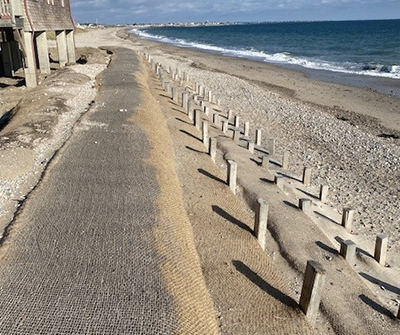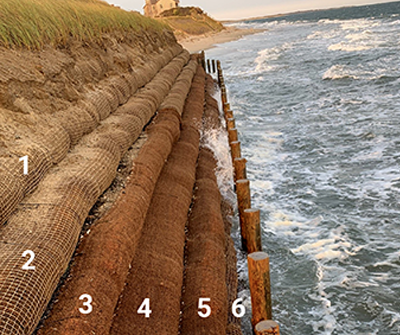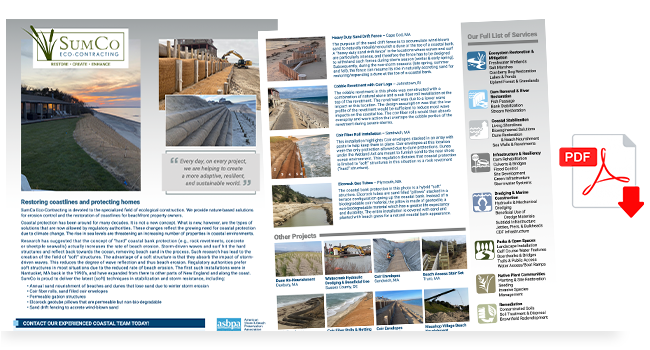The sea level along the U.S. coastline is projected to rise 10 - 12 inches on average in the next 30 years, putting homes, businesses, and critical infrastructure at risk.
The sea level along the U.S. coastline is projected to rise 10 - 12 inches on average in the next 30 years, putting homes, businesses, and critical infrastructure at risk.
Below are some Coastal Resilience techniques that our team is implementing along the New England Coastline.

Cobble Revetment with Coir Logs
– Johnstown, R
The cobble revetment in this photo was constructed with a combination of natural stone and a coir fiber roll installation at the
top of the revetment. The revetment was due to a lower wave impact at this location. The design assumption was that the low profile of the revetment would be sufficient to reduce most wave impacts on the coastal toe. The coir fiber rolls would then absorb overspray and wave action that overtops the cobble portion of the revetment during severe storms.

Coir Fiber Roll Installation
– Sandwich, MA
This installation highlights Coir envelopes stacked in an array with posts to help keep them in place. Coir envelopes at this location
were the only protection allowed due to dune protections. Dunes under the Wetland Act are meant to furnish sand to the near shore
ocean environment. This regulation dictates that coastal protection is limited to “soft” structures in this situation vs a rock revetment (“hard” structure)


